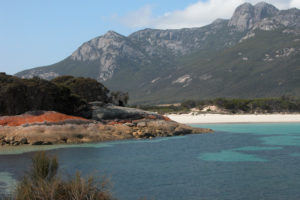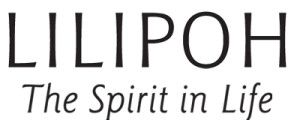The Power of Perception; Actively Engage in the World and Be Transformed!
By David Tresemer, PhD
Summer 2016, Society & Community - Issue #84, Vol. 21
 What happens when you perceive something, let’s say a view of a mountain next to the sea? Let’s begin with a mechanical point of view. The rods and cones in your eyes take in impressions of shapes, colors, and textures, then they bundle them together in a coherent set of patterns that you store in the neurons of your hippocampus (and later transfer to other places in your neuro-computer). Later you can evoke the mountain-sea mental picture. Thus the human being senses a scene, then takes something (an impression) away. As photographers sometimes say, “I’ve captured the scene!” Captured, and taken away. The human being is possibly changed from the experience. The actual scene—the mountain and the sea—stays the same.
What happens when you perceive something, let’s say a view of a mountain next to the sea? Let’s begin with a mechanical point of view. The rods and cones in your eyes take in impressions of shapes, colors, and textures, then they bundle them together in a coherent set of patterns that you store in the neurons of your hippocampus (and later transfer to other places in your neuro-computer). Later you can evoke the mountain-sea mental picture. Thus the human being senses a scene, then takes something (an impression) away. As photographers sometimes say, “I’ve captured the scene!” Captured, and taken away. The human being is possibly changed from the experience. The actual scene—the mountain and the sea—stays the same.
Perhaps you get better at this, and engage more of your senses. You smell the salt air; you taste a pepper-berry growing on the mountain’s slopes; you hear the sounds of the birds who live there. Words arise, ranging from the easy (“It’s beautiful!”) to the complex (“Peach-colored granite where the slightly acid rain has over millennia streaked down over the cliffs, contrasting with grey-green of sun-baked lichen.”) These sensory experiences are added to what we can call a mental picture.
So speaks a materialistic point of view. Anthroposophy adds emotional charge to the contents of the mental picture (reactions of sympathy or antipathy, or both), that is wrapped up in the mental picture, and gives it staying power. You tend to remember things to which you have reacted.
Materialists, although discovering interesting things in their research, would do well to admit how little they know about sensory experience. How little they know about the process of memory; how they already know that the mind does not work as a computer with its electrical circuits, its 0s and 1s, completely different from synapses. They would do well to admit, and therefore stop using that metaphor. To admit how impossible it is that so many images can be “stored”; how people with serious brain damage can sometimes have advanced mental functions in just those areas that have supposedly been damaged, and so forth.
The science of anthroposophy takes us further. Perception transforms what is perceived. Artists seem to know this. It is a privilege to accompany an artist anywhere. The artist has honed the senses and interacts with the mountain and the sea; the artist takes in and gives back. As Tennyson wrote in Ulysses, “I am a part of all that I have met.” As we have all been educated in the materialistic view described above, this may be an entirely new idea, so here I simply suggest it. You will soon verify its truth: you interact with everything that you see and touch and smell. By perceiving, you have an impact upon it. (Projection of prior prejudices muddies a fresh perception; all of us struggle with projection, which is a topic for a future column. The purer the openness, the more amazingly perception transforms self and other.)
Where do we learn this mutuality? From relationships with other human beings. It’s clear that your interactions with others have an effect. You say something, and that body over there shifts, looks toward you, and utters some sounds back in your direction. We transform each other with every interaction. Over time we get better at it. Instead of thinking we are isolated pillars of protoplasm, we begin to sense that we live and move in a sea of relationality with other human beings (our trainers). And we live in relation to every other thing that we perceive, as well as all the things that aren’t obvious, the ones whose presence and character we learn to feel. Once aware of this power of conscious perception, we can enact the potency of bearing witness: to social crises (catastrophes, both natural and human-made); to the mountain and the sea; and to another being-human.
The more honest and open your perceptions, the more the relationship with mountain and sea are transformative of both you and the scene.
Too often the role of counselor or teacher posits a one-way movement of information from superior to inferior, with the idea that the professional moves unchanged from one client/student to another. However, as soon as the student or client walks in the door, you the professional are changed and changing, interpenetrating and engaged, transforming one another.
When you understand this way of being, you become less enamored of the substitutes for real experience. Instagram photos (and even the photo accompanying this column) become less interesting, because they aren’t rejuvenated by a relationship. Imagine your parent being only on the computer. It might work for a while, but you would begin to feel the isolation, the stunting of your senses, the narrowing of what is perceived and is therefore transforming. By underestimating the power of our own engagement in the world, we diminish our possibilities. In this view, art has the possibility of demonstrating to us how we too can interact with the glorious world, mutually transforming self and other.
David Tresemer, PhD, teaches in the certificate program in Anthroposophic Counseling Psychology (www.anthroposophicpsychology.org). The photo comes from the Mountain Seas eco-retreat at mountainseas.com.au.
